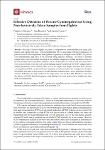Effective Detection of Porcine Cytomegalovirus Using Non-Invasively Taken Samples from Piglets
Morozov, Vladimir A.
Heinrichs, Gerd
Denner, Joachim
Shortage of human organs forced the development of xenotransplantation using cells, tissues, and organs from pigs. Xenotransplantation may be associated with the transmission of porcine zoonotic microorganisms, among them the porcine cytomegalovirus (PCMV). To prevent virus transmission, pigs have to be screened using sensitive methods. In order to perform regular follow-ups and further breeding of the animals, samples for testing should be collected by low-invasive or non-invasive methods. Sera, ear biopsies, as well as oral and anal swabs were collected from ten 10-day-old Aachen minipigs (AaMP) and tested for PCMV using sensitive nested polymerase chain reaction (PCR) as well as uniplex and duplex real-time PCR. Porcine cytomegalovirus DNA was detected most frequently in oral and anal swabs. Comparison of duplex and uniplex real-time PCR systems for PCMV detection demonstrated a lower sensitivity of duplex real-time PCR when the copy numbers of the target genes were low (less 200). Therefore, to increase the efficacy of PCMV detection in piglets, early testing of oral and anal swabs by uniplex real-time PCR is recommended.
Dateien zu dieser Publikation
Keine Lizenzangabe

